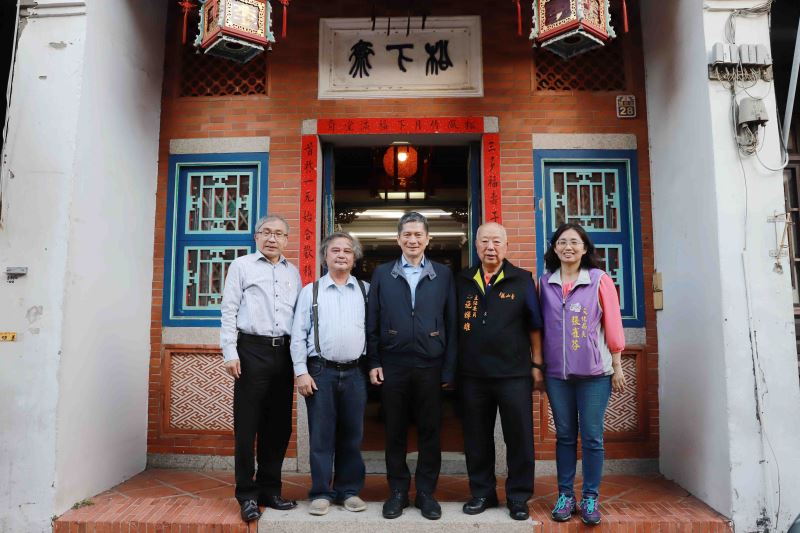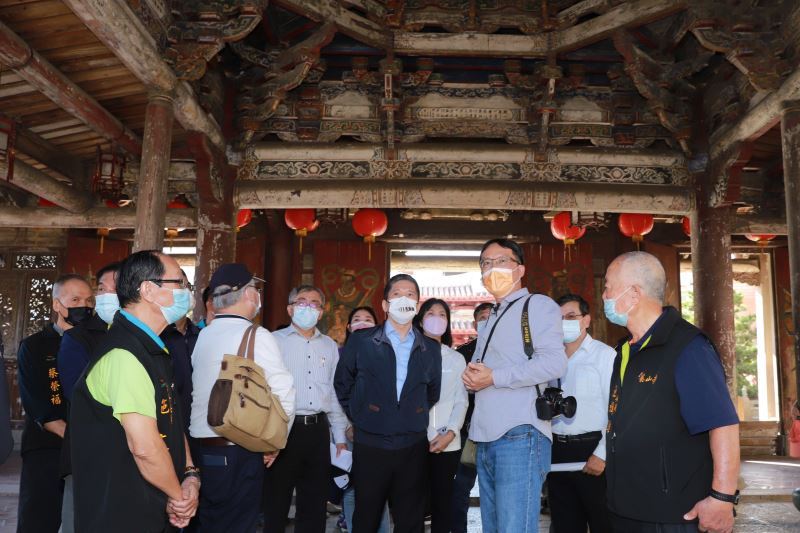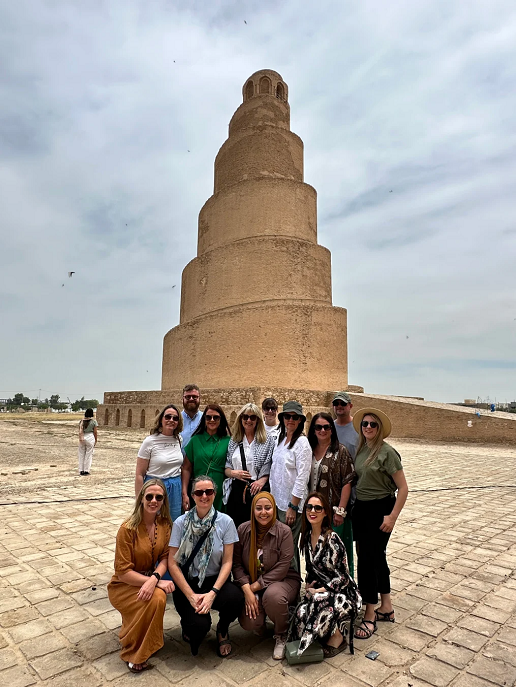According to the Ministry of Culture, the Culture Minister Lee Yung-te visited the Lukang Township in Changhua County, known for its rich cultural heritages, to examine the restoration process of Lukang Longshan Temple, a national historic site, and pay visits to four preservers of "Important Traditional Crafts (重要傳統工藝)" on Nov. 29.
Lee was accompanied on a trip by legislator Chen Hsiu-Pao (陳秀寳), minister Zhang Que-fen (張雀芬) of the Changhua County Cultural Affairs Bureau, mayor Hsu Chih-hung (許志宏) of Lukang Township, chair Shih Hui-hsiung (施輝雄) of the Longshan Temple Management Committee, and others.
Read More: South Korean YouTuber lixian had a taste of traditional & popular delicacies at Nanmen Market

Culture Minister Lee Yung-te (Middle), traditional woodcarving artist Lee Ping-kuei (2nd from left), minister Zhang Que-fen of the Changhua County Cultural Affairs Bureau (right), Shi Hui Xiong, Chairman of Lukang Longshan Temple, Chen Ji Min, Director of the Bureau of Cultural Heritage ,Ministry of Culture (1st from left) took a photo together. (Photo / Provided by the Ministry of Culture)
The minister stated that Lukang Township has rich tangible and intangible cultural heritages, thus the comprehensive restoration project of Lukang Longshan Temple must be carried out as soon as possible. He hopes that the temple will be at its best after the reconstruction, and that the skills of the living national treasures will be passed to the next generation, so that the public can better understand the township's precious cultural heritage in addition to expanding local cultural tourism.
Read More: Vietnamese student paints beautiful mural for NIA Tainan service center
1210.jpg)
Culture Minister Lee Yung-te (3rd from right) visited traditional woodcarving artists. (Photo / Provided by the Ministry of Culture)
The four national living treasures included master tinsmith Chen Wan-neng (陳萬能), traditional woodcarving artist Lee Ping-kuei (李秉圭), Buddhist sculptor Shih Chih-hui (施至輝), and traditional wood sculptor Shih Chen-yang (施鎮洋).
Lee Yung-te noted that the Bureau of Cultural Heritage has formulated a plan for the preservation and maintenance of intangible cultural heritage under the Cultural Heritage Preservation Act (文化資產保存法). Intangible cultural heritage will be preserved through diverse means such as education, promotion, investigation, and records.
According to the Ministry of Culture, the Lukang Longshan Temple was established in 1858 and became a first-class national historic site in 1983.







